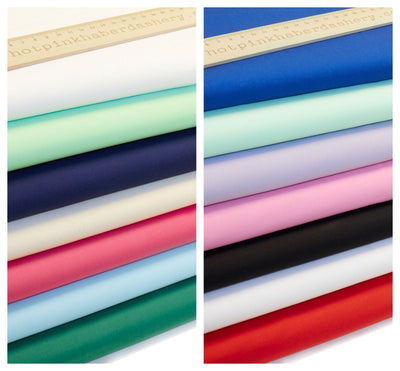A Short History of Knitting
The history of knitting is a super interesting and as one of our well endorsed haberdashery methods, we would like to share this history with you in all its colour so that next time you pick up those needles you can think of all the people before who have done the same thing but for many different reasons, for many centuries.
So, let’s begin at the very start…

Origins of Knitting
The oldest knitted artefacts on record are (unsurprisingly), socks! Found in Egypt and dating back from the 11th century, these incredible knitted toe warmers are made of very fine gauge, have complicated colour work and some even have a heel! These detailed complexities imply that they certainly weren’t the first ever thing to be knitted (we know that a first time knitter can rarely nail a sock heel!). Because of this, we can’t say exactly when the first knitted items came around but we can conclude that it was a very, very long time ago. Most research on the origins of knitting have found that it most likely started somewhere in the Middle East and from there spread to Europe via Mediterranean trade routes and then onto America.

European Knitting
The earliest known knits in Europe were made by Muslim knitters who were employed by Spanish Christian royal families. We know this from knitted items found in the tombs of the Abbey of Santa Maria la Real de Las Huelgas - a royal monastery in Spain. Among these items are cushion covers and gloves buried with a Spanish Prince who died in 1275.
Other historical knitting evidence comes from several European paintings from the 14th century which show the Virgin Mary knitting. Other archaeological finds have been in medieval cities all over Europe including London and Newcastle! Tax lists from that time also show the spread of knitted items such as children’s woollen hats.
During the Elizabethan era, knitting schools were established to provide income to the poor and due to the fashion at the time ensured they had plenty of work creating fitted stockings for both men and women. These items were then sent off to the Netherlands, Spain and Germany, spreading the knitting bug throughout Europe.

Knitting for War
During the First World War knitting really came into its own with its usefulness invaluable to the war effort. Women, men and children alike knitted lots of clothing and accessories to help their troops such as creating socks, hats, scarves, jumpers and balaclavas for them. It was so vital to the war efforts that in fact, the Red Cross and other women’s magazines were sending out leaflets and patterns specifically for troop attire. Knitting became somewhat of a craze in Britain which helped to support the military forces.

Fashion Knitting
In the 1920s, knitting became hugely popular in the western world with jumpers becoming an essential fashion item for women, men and children. During this time, knitwear became synonymous with popular sports too such as tennis and cricket; Edward VIII even brought knitwear to golf by wearing a Fair Isle jumper on the course. From sports to high fashion, commercial knitting moved away from the production of just underwear and socks. Chanel and Vogue started featuring knitwear in their ranges expanding the public’s passion for knitted fashion!

Knitting’s Fall from Grace
In the 1980s we saw the decline of our beloved knits as the craft started to seem old fashioned (how dare they?!) and knitting lessons began to cease in schools. Due to the increased availability and low cost of machine-knitted items, it meant that we could have a jumper at the same cost of doing the job ourselves so of course, people opted for this instead. During this time, knitted items were replaced with tracksuits and sweatshirts which were sewn from mircro-knit synthetic fabrics instead which were highly fashionable and cheaper.
This, along with trends moving away from formal clothing saw a decline in the popularity of knitted garments although knitting grew in popularity as a hobby - an artistic outlet rather than just practical (which we’re on board with!).

21st Century Revival
At last the 21st century has a revival and resurgence of knitting! According to sources, this is partially due to the the growth in DIY crafts, sustainability and easy access to inspiration, products and instructions via the internet (this one has certainly worked for us…). Also helping to grow the popularity of knitting is celebrities such as Julia Roberts, Dakota Fanning, Cameron Diaz and Winona Ryder who have all publicised the fact that they knit.
During this time of unprecedented technological development, we love the fact that knitters are able to buy haberdashery products online from all over the world are able to connect to share their interest of something that is thousands of years old. We have taken this age old process and turned it into hobbies, passions, businesses, sustainable alternatives, gifts etc. There are so many uses for our beloved knitting and over the past 10 years we’ve loved seeing it grow in popularity again amongst the younger generation as well as having kept the fire burning by those older generations who used to use knitting in very different ways.

Knitting is just one of the haberdashery based projects we love here and we’ve thoroughly enjoyed discovering the history of where it first started and how its evolved over the many years to what it is now. We’ve love to see any knit-based projects you’ve been working on this season so please send in any photos you have!






Leave a comment